Post by Jen Berlinghof
Bird migration is well underway, and the nesting season is upon us at the Lake County Forest Preserves in northern Illinois. I watched last week as an American robin (Turdus migratorius) plucked dried grasses from the yard, nudging them into place with her beak and wings, readying her cup-shaped nest for the azure eggs that are synonymous with spring. From the nearby American sycamore (Platanus occidentalis) tree, I heard the gurgling chatter of a flock of brown-headed cowbirds (Molothrus ater).
I thought about how while the robin might’ve seemed completely absorbed in her nest building, she was probably wearily listening to the cowbirds, too. Brown-headed cowbirds are North America’s most common avian brood parasite, forgoing nest building altogether. Instead, they lay their eggs in the nests of more than 200 other species of birds, leaving the incubation and rearing of their young to these unwitting foster parents.
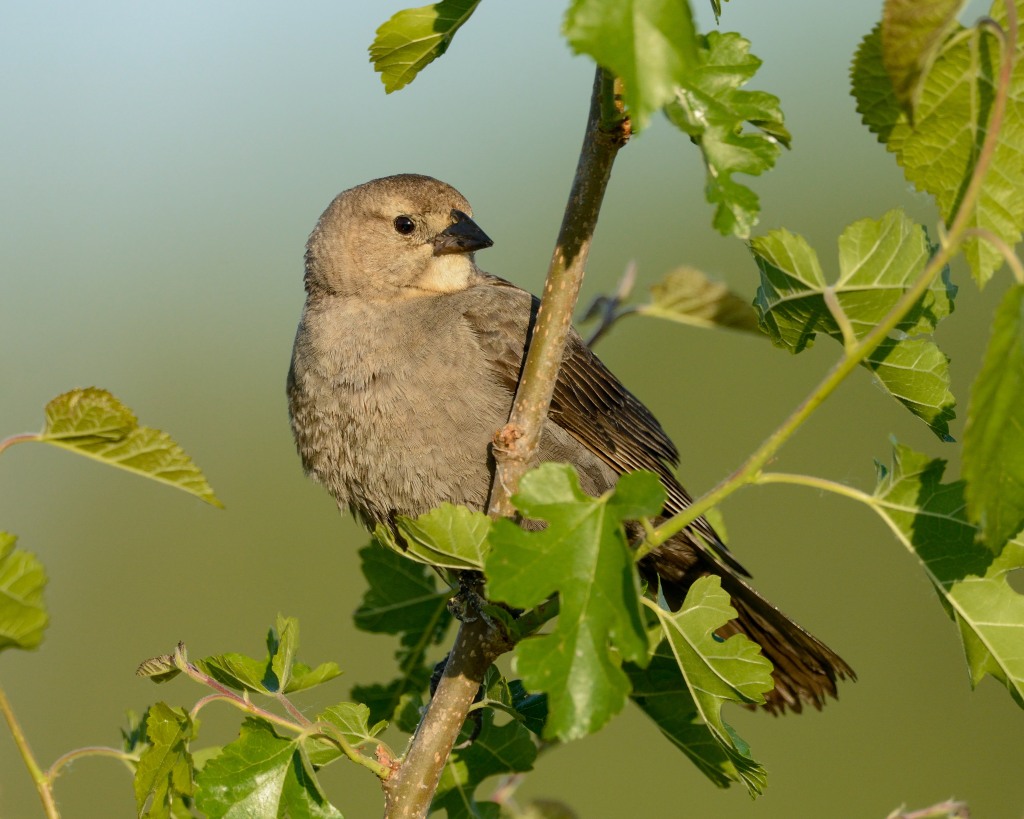
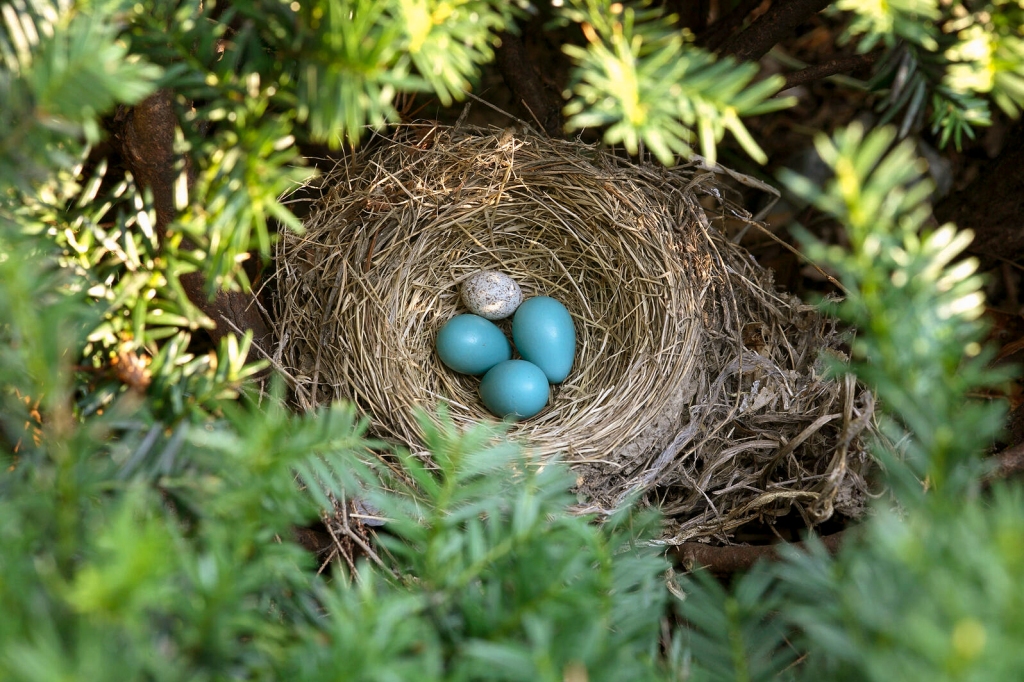
Historically, cowbirds were commonplace only in the open grasslands of the Great Plains. They followed bison herds, and subsisted on insects flushed by these grazing beasts and seeds foraged from the ground. Yet cowbird populations have surged and expanded as human development has spread—fragmenting forests and creating a patchwork of agricultural land, as well as footholds for cowbirds to now flourish abundantly from coast to coast.
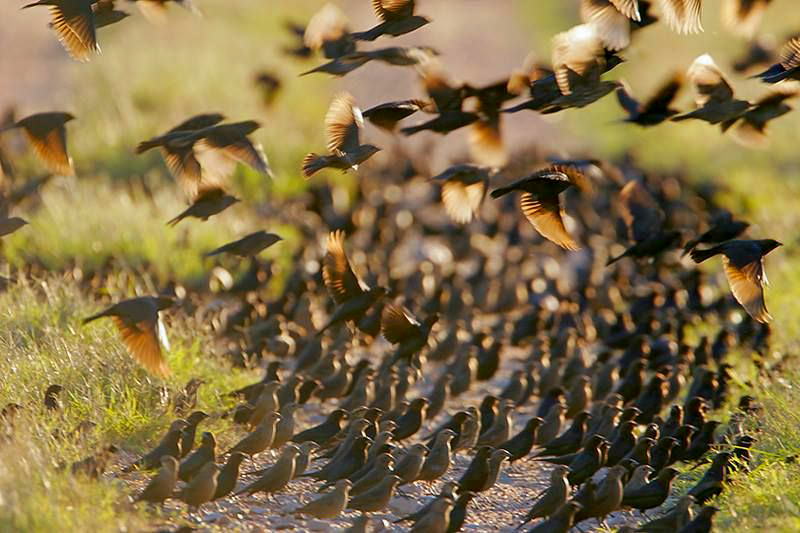
Without the burdens of nest building and chick rearing, female cowbirds have the time and energy to focus on egg production. They create as many as three dozen eggs each breeding season. While they will lay their eggs in a variety of species’ nests, genetic analysis shows that most individual females specialize on one particular host species. It’s hard to imagine, but most hosts don’t recognize cowbird eggs and chicks as different from the norm. They raise them as their own without ruffling a feather.
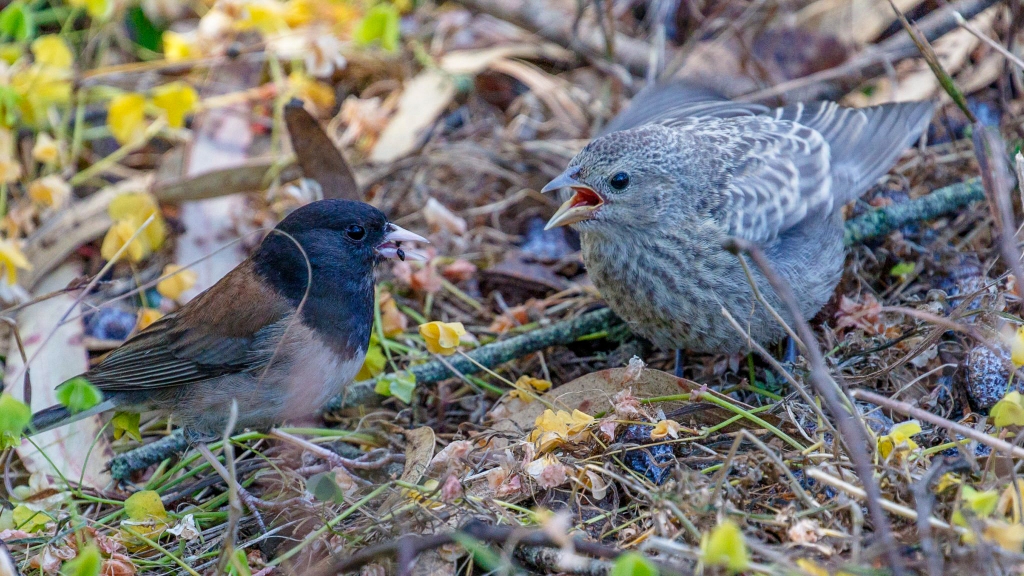
Cowbird development moves fast, enabling the chicks to gain an advantage at the expense of the hosts’ chicks. For starters, cowbird females lay their eggs more quickly than other birds—sometimes in under a minute—compared with the 20-100 minutes most passerines take. And cowbird eggs hatch earlier than others, making them the biggest chicks in the nest. This allows them to nudge their smaller, “adoptive” siblings out of the way when meals arrive from a parent. Cowbird chicks sometimes smother other nestlings, or even toss out the host’s eggs and smaller babies.
There are a few host species that have “cracked the cowbird problem.” They see the cowbird eggs for the intruders that they are and fight back. Larger species, such as robins, puncture or toss cowbird eggs out of their nests. Smaller species, such as yellow warblers (Setophaga petechia), that are too tiny to lug cowbird eggs out of their nests reject this role of foster parent foisted on them in a different way. They weave another layer of grasses on top of the trespasser egg, thereby preventing incubation. New research also suggests the yellow warbler’s warning call for brown-headed cowbirds might also benefit eavesdropping red-winged blackbirds (Agelaius phoeniceus), another common parasitic target for cowbirds.
Even though the cowbird adults aren’t involved with the rearing of their own young, it appears that, in some cases, they don’t abandon their chicks entirely. They keep an eye on their offspring periodically, and notice if a host removes or destroys an egg. This can trigger a retaliatory reaction from the adult cowbirds, called “mafia behavior,” in which they penalize hosts that remove their eggs by destroying the hosts’ eggs and nestlings. As it turns out, hosts are better off accepting the parasitic cowbird eggs and end up producing more of their own offspring when they do.
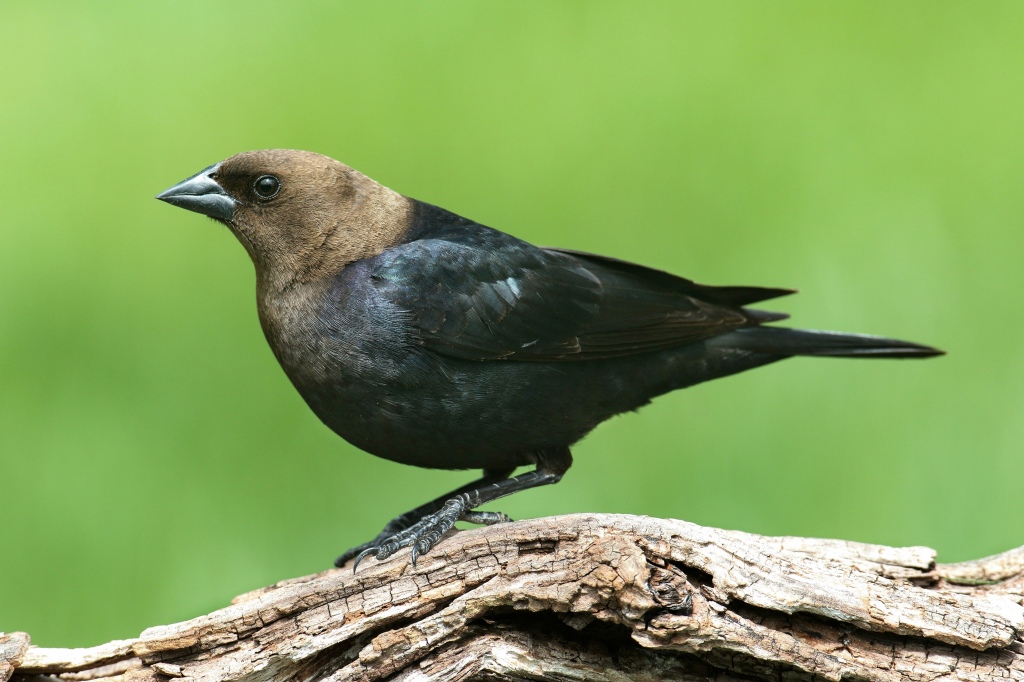
The fledgling cowbirds leave the adoptive nest about 10 days after hatching and gain independence from foster parents after about a month. At this point, they find and join a flock of cowbirds in the area and carry on their lives. Regardless of whether we humans see this behavior of brood parasitism as savvy or sinister, it has proved effective and is the hallmark to brown-headed cowbird survival.
While cowbirds have contributed to the decline of several endangered birds, such as Kirtland’s warblers (Setophaga kirtlandii) and black-capped vireos (Vireo atricapilla), they are a native species and thus protected under the Migratory Bird Treaty Act of 1918. As tempting as it may be to step in and remove parasitic eggs from host nests, taking eggs is illegal without a permit. Additionally, it’s been found that due to “mafia behavior,” and to the fact that many hosts assume the cowbird egg is part of their clutch and will have a nest-desertion response if a certain proportion of their eggs is removed, it’s best to leave them alone. Letting nature sort it all out, as with so many other facets of life, is the appropriate course.
While we’re on a bird note … if you’d like to learn the songs of migrating birds and tips to identify them, register for our FREE virtual Bird Walk and Listen programs on April 29 and May 6, 8-8:30 am.
